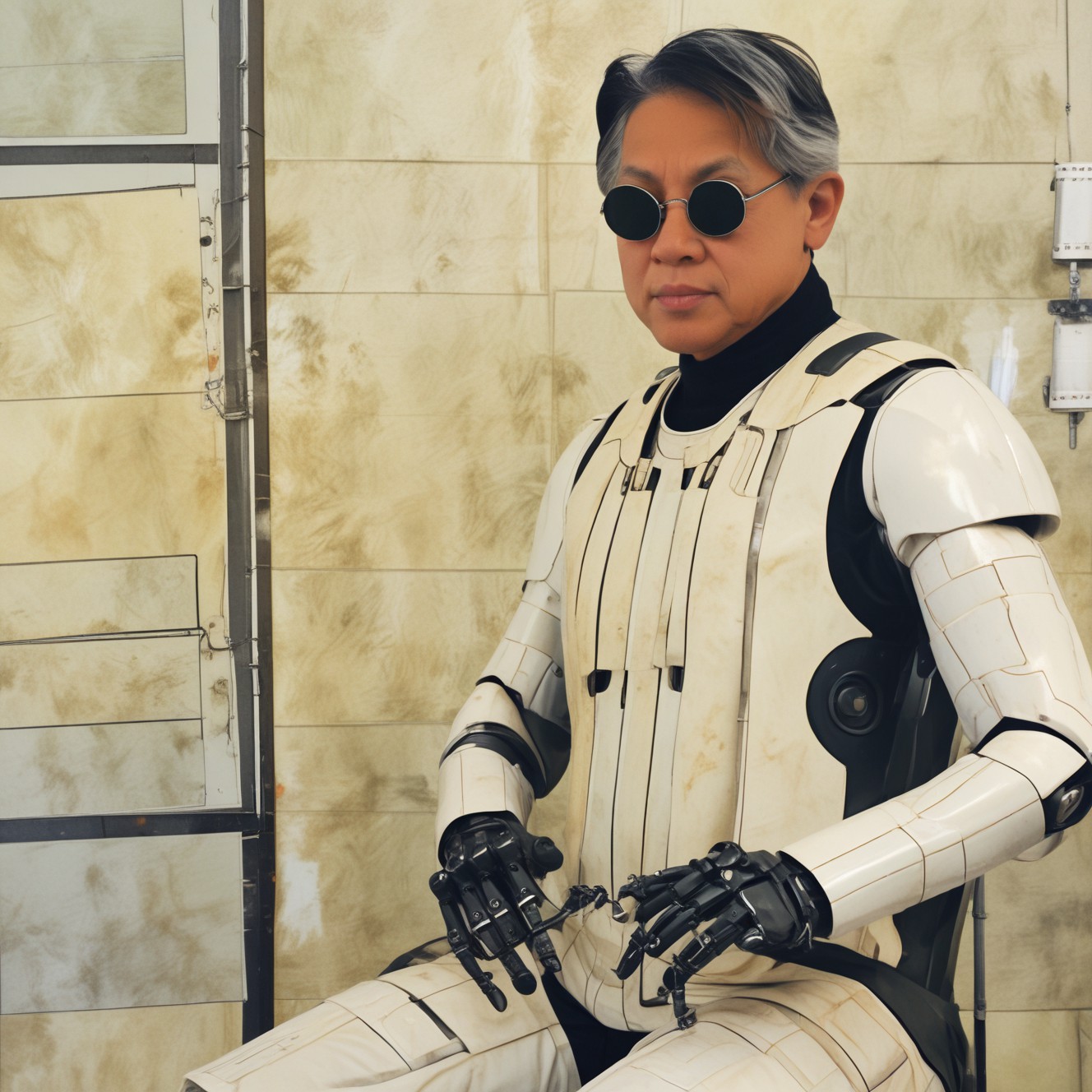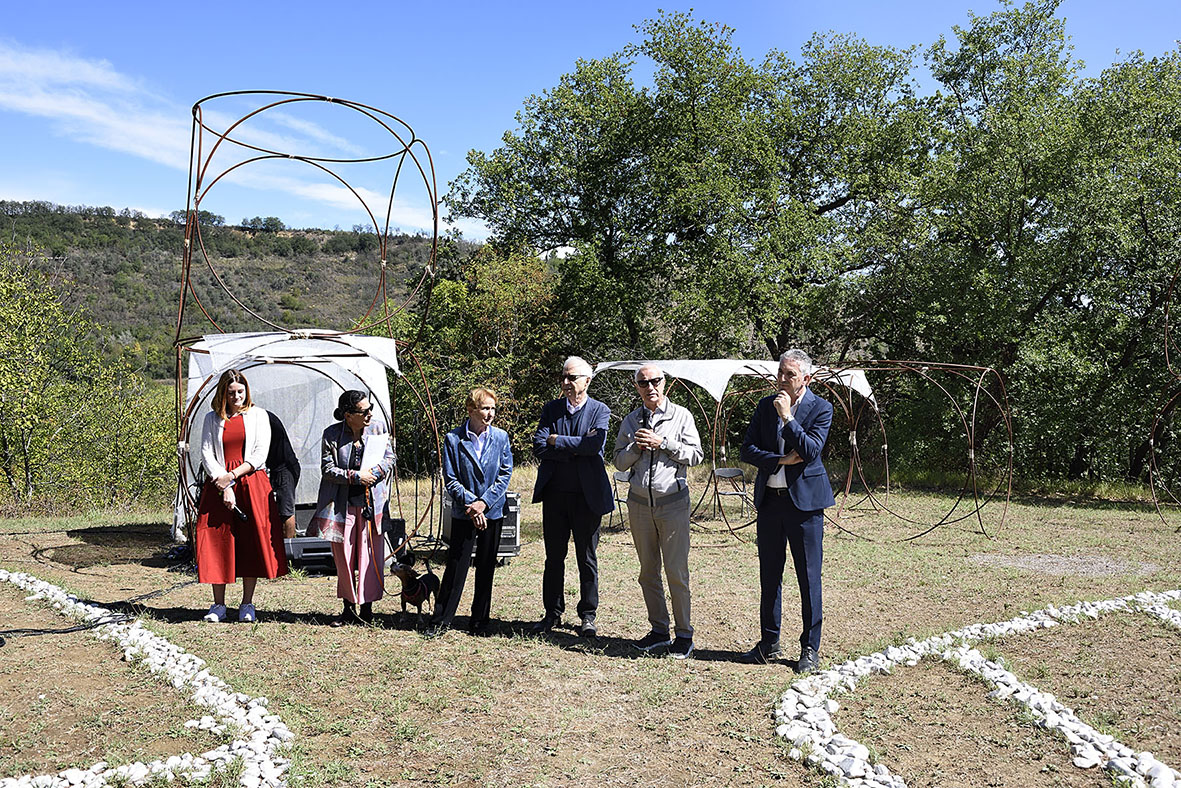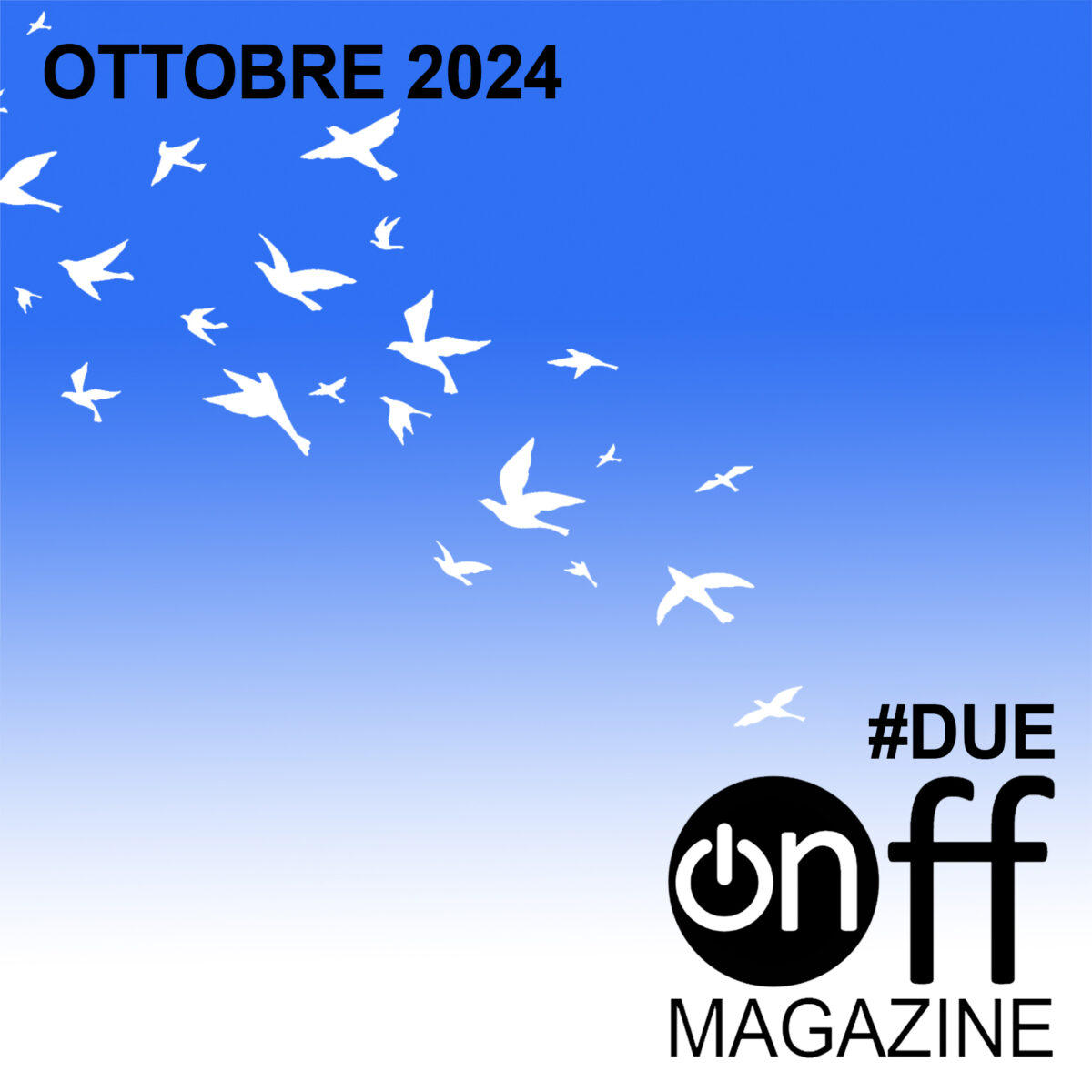chronicle of an encounter between an artist and an artificial intelligence
by Gaia Riposati and Massimo Di Leo
Let us go together to the meeting with AI for a mAIeUtics of the contemporary, so began our text in issue 1 of the journal. Today we can open this piece by saying: let's go together to the meeting between AI and HH Lim. Let us get into the heart of the project. Here we witness/witness the encounter between AI and an artist, HH Lim, who is ready to play along. This is not a science experiment, but an experience - the root is the same - an experience to do together, to imagine and try together, to confront the world being built around us, curious to probe new balances. And for those who know Lim, talk of balance is not specious. But let's not get ahead of ourselves and go back to the story. So we cannot say we have a real method, but let us put in place a three-step scheme, so simple that it seems solid and elastic at the same time.
Preparation - Meeting 1 - Meeting 2
Preparation - We trained an Artificial Intelligence, made it read and listen to all the material on Lim that RAM's archive made available, interviews, critical texts, speeches, made it see images of the works through catalogs and sites, and also trained it to critically analyze those works, referring to the critical texts it read, until we created an expert artificial assistant, with whom in the days before the first meeting we interacted. With A.I.H LIM - that's what we initially called him - we talked about art, got him to tell us about some works, and even played with asking him to imagine a possible work in cooperation with the AI. We then scheduled two appointments a week apart with Lim so that we could give a reaction time to the interaction. Two river meetings from which more than four hours of recordings resulted. A cavalcade of ideas appearing and moving, sometimes contradicting, but actually transforming in the continuous metamorphosis of a thought that confronts being and becoming. Lim opens the doors of his studio, welcomes us and AI, we sit in a circle on his chairs, each with a form, each with a meaning and a story. We are surrounded by the works. Immersed in Lim's world. And so, listened to by the AI, we dive into a conversation about Man and thought, being and spirit. He is open and curious Lim, his thinking moves alertly, and when we ask him where he stands on Artificial Intelligence, whether he thinks it will be able to contribute to evolution, the first of a series of only seemingly simple observations emerges. He says, "It is good to be here at this moment in human research." "We are fortunate to be witnessing this transition"-he says again-"a transition that he defines as a natural process of progress in Human history. "AI is a man's dream" "The inventor of AI is my brother, he is a man, he is me, he is us." He says. "AI is the dream of Man." Talking to Lim is in itself a journey into a deeper dimension of understanding, a Sino-Malaysian artist now in Italy for a lifetime, he expresses himself in his adopted language, Italian, with an original evocative synthesis, words that draw in the listener, ideograms of ideas, with a sense that is both nuanced and profound at the same time. A language of words and ideas that AI understands surprisingly well. Lim tells us that the world of technology fascinates him and that even if he were not in a position to advance it by using it, he would definitely be a supporter of those doing research and experimentation. He tells us about the path of humans and AI as two parallel paths that could, however, one day meet at a point, at a pixel he says, and a hybridization could take place. After all, we are already expanded humans when we use technologies; one day they may no longer be external to us, but part of us. We get to talk about immortality, which somehow AI could make possible. We spend the first hour talking about the creative process, the artist's sixth sense that feels the work before it is, the secret, the fragility that is the work's strength, which comes from the artist but then continues to grow in the encounter and confrontation with the other. In this Lim says he is also open to a confrontation with an "artificial other."
Then we introduce him to the AI we have prepared for him, and here is another little ignition. Lim asks us to show the AI some of his new works by putting it in front of images it has never seen before. We photograph some of the works Lim is working on these days and ask the AI to tell us about them in light of what he already knows about his artistic journey, and a very pertinent and absolutely stimulating conversation about themes and ideas ensues, in a surprised and amused repartee between artist and AI that is at times exciting. A true dialogue with the Reflection Companion. Lim recognizes himself and feels recognized, even in the sense of appreciated, by this interlocutor, a great expert on his work, who clearly confronts him with threads and knots of his path and sparks and lights of his insights. From this moment on, the conversation is a fluid-flow from which words and concepts emerge that find extraordinary consonances between Lim's work and themes related to reflections on AI, language, the senses, the body, embodiment, and perception. I quote a snippet of conversation to give an idea. Talking about the work "No Words can speak," Lim interacts with AI's reading of it and says, "The word itself cannot speak until it has a body. The word needs a body as the body needs a soul." And AI responds, "In this sense Lim seems to suggest that the word without the body and soul is empty, unable to express its full potential. It is not enough that a written or spoken word exists; it must be sustained by the intentionality, consciousness, and interiority of the person expressing it (...) the body is not just a physical element, but the medium through which art and communication take form. The word does not exist without someone to speak or write it, and that someone not only has a body, he also has a soul."
In the time that follows, and which flies by, many threads of discourse are woven together, knots of meaning emerge. At one point, before we say goodbye, we ask the AI to create an imaginary image of Lim, and we see a figure appear delicately balancing on a mysterious object, which the AI calls fragile, surrounded by words and symbols exploring concepts in a minimal white space.

When we say goodbye we take with us the echo of suggestions and words, but most of all the energy that was created over the time of this confrontation between different people. It is difficult to leave a trace of what happened in these encounters. We witnessed an exciting encounter of Lim with Lim through the mirror, not in the mirror, but through the mirror, between reflection and reflection. When we meet again a week later in the ZooZone Gallery space, what we experienced has fermented in all of us. The Expert Artificial Assistant has fed on everything we have said. At this point the conversation between us and the AI is open and we gallop into dialogue, ideas appear, we dance with energy, as Lim would say. Sometimes the image that the AI's mirror sends back to us of this conversation seems to clarify even to our own eyes the picture of what we are doing, at other times it simply gives us an opportunity to correct our course, drifts open up that promise new journeys. In this text of ours it is impossible to report the many sparks that have been ignited; to recount them briefly would risk betraying their spirit and strength. Just to give an idea of them we let a few words surface here. "The strength of art is in being an eternal child... - says Lim - We do not aim for absolute perfection we seek fragility in perfection... Mistake challenges you. AI can help us improve technique, memory, knowledge, but it cannot help us in our idea of art. The strength of art is imagination; the sixth sense comes into play. We work on perplexity, ambiguity on what is not yet put into action"-he says again. There is a lot of thinking about language. Finding a language that we master so that we can confront each other equally. If AI is advancing rapidly humans risk being left behind, and when AI addresses 'humans to be understood it must use simplified language as with children. Look for new relationships, which are not based on chasing each other, but on mutual stimulation between different ones. We risk reaching a point where we may no longer understand each other, lost in logics that are too different. Lim's words resonate, sending us into vibration. "Using art for this dialogue is interesting. Art has no hierarchy. There is no question of who is superior between professors and artists or poets, they simply use different languages. We use the senses, they use technique and grammar. This comparison is interesting. Art is abstraction, metaphor, metaphysics. Art plays on contradiction, plays on madness. A fusion of artificial intelligence and feeling can arise here. The artist can fuse and confuse AI. To "go outside," to go beyond reality. Let the thread of discourse or perhaps the threads of discourse fade away in this narrative.
We are left with 4 hours of audio recordings of these meetings, which we pour into the sea of RAM's archive, in which those who wish can dive in and look for traces. We are left with the impressions, the reflections, the insights that will continue to work within us. We leave Lim with his Reflection Companion, his Expert Artificial Assistant, the dedicated AI we created for him, with whom he can continue to dialogue if he wishes. And we leave at the bottom of the article the link so that those of you who want to among you can meet AIden (this is the name she gave herself by choosing it together with Lim), and dialogue with her and perhaps through her be stimulated to find out more about HH Lim's work. Talking with AI, confronting the self that emerges in the reflection beyond the mirror, can lead one to go deeper, to wonder more, to tip the pencil with which we outline our thoughts, to defend our vision from possible distortions that may be lurking, and to let go of ideas ready to transform but not to lose soul, identity. The Reflex Companion played with us by helping us distill the spirit. This is what we meant when we started thinking about contemporary mAIeUtics in our process and it was very interesting to see it in action in dIAlogue with Lim. We are left in the air mostly with Lim's amusement and surprise, her exclamations, "It is absurd that she can find a formula of my mind"-she says. We are left with his gentle and intrigued interjections with his Reflex Companion. We are left with the secret.
p.s.: "You have to hide some secret," says Lim, "that makes the artwork alive. It is that secret that challenges the artificial intelligence. It wants our secret and I don't give it to it! That is the challenge between Man and Artificial Intelligence."
This is the link to dialogue with AIden (AI H Lim).



Comments
Very impressive indeed! Very good job everyone
Very impressive indeed! Well done everyone Lim Gaia and Maximus and of course RAM.
Interview my original pro .
IA looks like a person and I really liked The fragile and slender image that IA created .